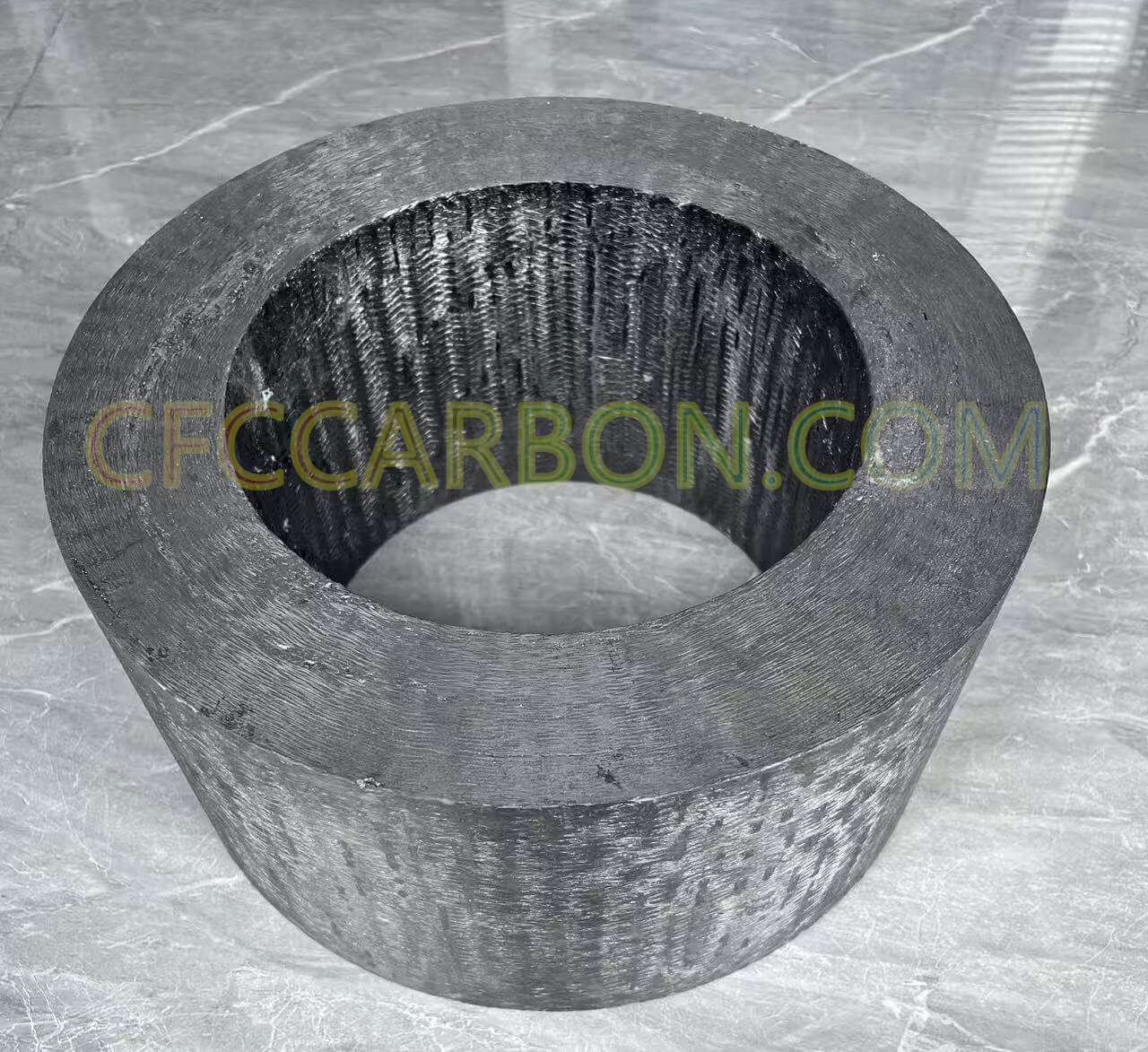When measured parallel to the fiber direction, the elastic modulus of a unidirectionally reinforced carbon composite can be calculated to a first approximation from the rule of mixtures
Ec=Em(1-Vf)+EfVf (1)
Where Em and Ef are the moduli of the matrix and fiber measured parallel to the fiver axis and Vf is the fiber volume fraction. When the modulus of the matrix is much smaller than the fibers, equation (1) reduces to
Ec=EfVf (2)
The above expressions give reasonable values for resin and metal matrix composites. Experiments carried out by Perry and Adams, using a

high performance carbon fiber composite mould-2D structure-material manufacturer China
variety of fiber types with SC-1008, FF-26 phenolic resins, or polyphenylquinoxaline and various furfural or furfural blends as impregnants, measured modulus values for CC composite which were much larger.
Further evidence for the large contribution of matrix to the stiffness of CC composites has been reported by other workers. For instance, Fitzer and Huttner reported modulus values for pitch-char matrix materials that were twice that computed using equation (2), implying that stiffnesses of the matrix and fiber were equal. The modulus values for resin char matrices were 40% higher. Further confirmation of this large stiffness contribution of the matrix was provided by the present authors in testing a unidirectionally reinforced sample of PAN fiber T-300 reinforced pitch material cut from a graphitized multidirectionally reinforced composite. The composite sample containing about 50 volume percent fiber reinforcement exhibited a modulus value of 45 Msi (310Mpa). Since the work reported by Becker indicates that the modulus of graphitized T-300 fibers is about 400Mpa, it can be inferred from equation (1) that the modulus of the carbon matrix in the direction of the fiber axis was 220Mpa.
In the previous section with microstructures, we established that an appreciate degree of preferred orientation develops on heat treating pitch, resin matrix precursors. Therefore, we concluded that this directionality significantly influences the modulus values of the resulting composite, and for a given volume fraction of fibers with similar bonding, the strong orientation tendency of pitch and highly oriented CVI-based matrix materials will produce the stiffest composite when measured parallel to the fibers.
Contact Us
related news /articles:
Influence of matrix on carbon fiber composite properties—introduction
Factors that influence the properties of Carbon-carbon composite
Carbon fiber reinforced composites manufacturer in China
Influence of matrix on tensile strength of carbon composite properties